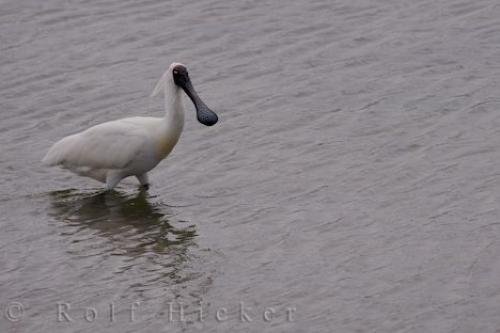Photo: Royal Spoonbill Bird
The Royal Spoonbill is a self-introduced bird originating from Australia which began breeding in New Zealand in the early 1940's.
Usually seen in estuaries, marshes or tidal creeks, the large white Royal Spoonbill belongs to the family of ibises, and are immediately distinguishable by their long, black, spatulate bills. They may be seen perched on posts, or in trees near lagoons, around freshwater lakes and on the coast along tidal mudflats.
With their spatulate bills, food is located by touch, so spoonbills successfully feed in the dark as well as during the day. Their particular manner of feeding is to gradually move forward, sweeping their partly opened bills from side to side in shallow water or across mudflats at the water's edge. In this way they trap small fish, crustaceans, molluscs and marine insects.
When capturing larger fish, the birds stop and swallow these before continuing with their sweeping action. In freshwater wetlands the catch tadpoles and frogs.
Royal Spoonbill, Platalea regia, in an estuary near Hinahina along the Southern Scenic Route, Catlin's Highway, Otago, East Coast, South Island, New Zealand.
Royal Spoonbill Bird

Pictures from photo gallery "Pictures Of Southern Scenic Route New Zealand"
This picture is part of the photo album "Animal Pictures" - there are more beautiful images waiting for you.
Related stock photo galleries, pictures & travel ideas:
Royal Spoonbill Bird
Technical Information:
I photographed this photo with the digital SLR camera model Canon EOS-1Ds Mark II, aperture of f/8.0, exposure time of 1/640 sec. on ISO 100, as always I used a original Canon Lens, the focus lenght for this picture was 400mm.
The Royal Spoonbill is a self-introduced bird originating from Australia which began breeding in New Zealand in the early 1940's.
